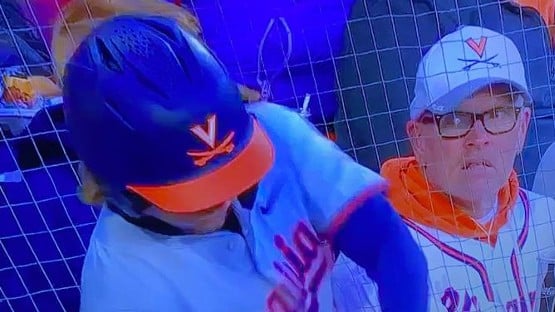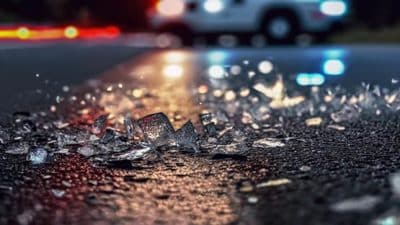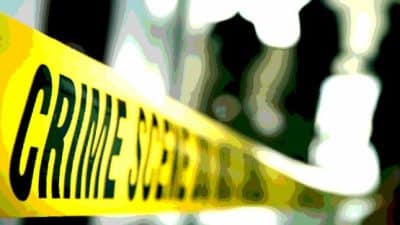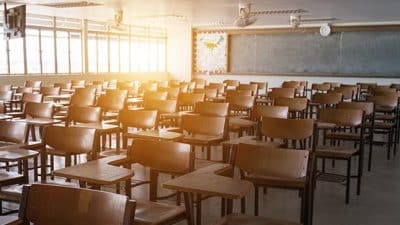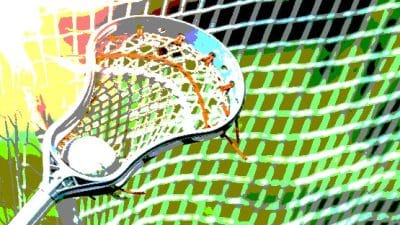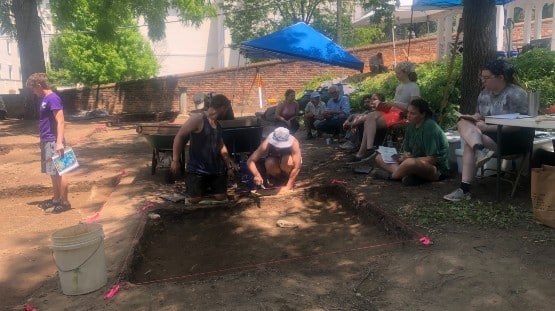
Students from a JMU course called Archaeological Field Techniques are finding artifacts every day at Woodrow Wilson Presidential Library.
Fifteen JMU students in archaeology school and their professor, Dr. Dennis Blanton, have found coal, pieces of ceramics, preacher buttons, pieces of slate, pigs teeth, a horse’s tooth and a silver spoon.
“There’s nothing incredibly sexy. And that’s by design. Sexy doesn’t tell us anything,” said Beth Scripps, a consultant on the project.
Digging down by strata, the group reached the first strata last week, which is from the Manse period to modern day.
The second strata is from the era when slaves were on the property.
“We’re finding a mixture of artifacts that do tell us about the occupants of the lower terrace,” Morgan McKinney, a JMU student, said.
The students believe a garden was once planted according to remaining soil at the site.
Near the wall along Frederick Street, it is possible a stable once stood where two dark stains are in the ground: what may have been the walls of the stable. But, even more interesting, is evidence under the stable.
“That evidence is really in the way, because, what we’re after is the layer we just started today,” Blanton said. He and his students returned this summer for what is under the evidence of the stable: hints of slave occupation. Documents by Jedediah Hotchkiss, who was General Robert E. Lee’s cartographer, date the stable to the 1850s. The slaves would have lived on the property in the late 1700s and early 1800s.
Blanton said that he and his students were not expecting what is known in archaeology as slave archaeology. They were expecting more evidence of Presbyterians on the property on the lower terrace, just like on the upper and middle terraces. President Woodrow Wilson’s family was living in the Manse on Coalter Street when he was born in 1856 because his father was a Presbyterian minister.
“But, the deeper we went, the artifacts were radically different,” Blanton said of the lower terrace.
The artifacts were really old and from a different socio-economic class, not the Presbyterians. Pieces of pottery are cheaper and the artifacts are clearly the belongings of a working-class people.
“Slaves are a different story. They have no voice in the historical record,” Blanton said. Slaves could not read or write, so less documentation was made of their existence.
The Manse was built in 1847, so evidence of slaves on the lower terrace will pre-date the Manse. Blanton said the evidence raises more questions than answers: Were they enslaved laborers who built the Manse? Were they the first generation of slaves who worked in the Manse? Perhaps they were laborers with Mary Baldwin College or for the Coalter Plantation.
“Yes, it’s a big deal. No one’s ever done the archaeology of lower-class people or enslaved in Staunton or hardly any of that in the entire Valley,” Blanton said. Much of archaeology in the Valley focuses on historical persons. “There’s a real purpose here to try and contribute genuinely new information.” Archaeology is the only way to prove enslaved peoples lived on the property.
Artifacts which hint at slave occupation include black glass beads which do not show up where whites occupied land. In previous years, Blanton and his students have found some of the beads at WWPL. Archaeologists believe the beads were used for jewelry worn by slaves. Also, evidence of diet is found in the form of animal bones from table scraps, including lower quality pork, chicken and rabbit.
“It’s not the things the Presbyterians would have on their table,” Blanton said. 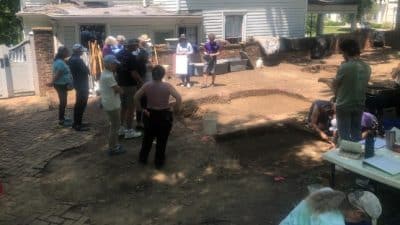
Heirlooms are also indicative of slave occupation. Whites passed down out-of-style pottery and other items to their slaves, who extended the use of the items.
Blanton said that excavation is data collection, but epiphanies come in lab work after the excavation work. In the classroom, Blanton’s students in the fall and spring will take apart the evidence collected in reverse order and reassemble the evidence in the lab.
Another spot the students thought had been a privy after viewing ground penetrating radar results. In actuality, the spot was an early feature to the Manse for trash disposal.
A lot of nails, mortar and glass have also been recovered, as well as a pen that said “Staunton, Va.”
“We don’t ignore any kind of information,” Blanton said of archeologists.
The students are not all pursuing archaeology as majors, but the summer course fulfills a requirement for their degrees.
According to Blanton, he and the students scoured library and courthouse information and found evidence a stable had stood in a 10-foot section near Frederick Street.
“We want to find the information, what this tells us,” he said.
Blanton grew up in South Carolina and Georgia, and earned a degree in anthropology from the University of Georgia. After teaching at the College of William and Mary for 15 years, then starting the archaeology work at the Shirley Plantation, he served as curator of archaeology at a museum in Atlanta before he and his wife worked in Costa Rica. He earned his PhD from UVA, and joined JMU’s staff in 2013.
The students, Blanton and volunteers will dig through June 22 at the excavation site. Then, they will do a year of lab work in the fall and next spring of cleaning and analyzing the artifacts.
A partnership between JMU and WWPL makes the excavation site possible, and the presidential library is funding the project. All artifacts recovered from the site will later be on display at WWPL.
“The story changes every day,” Blanton said of new information discovered.
Updates are provided every Monday on the WWPL’s website.



